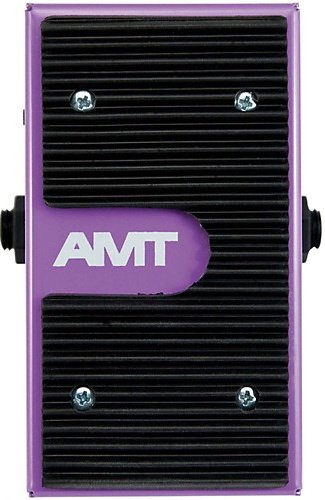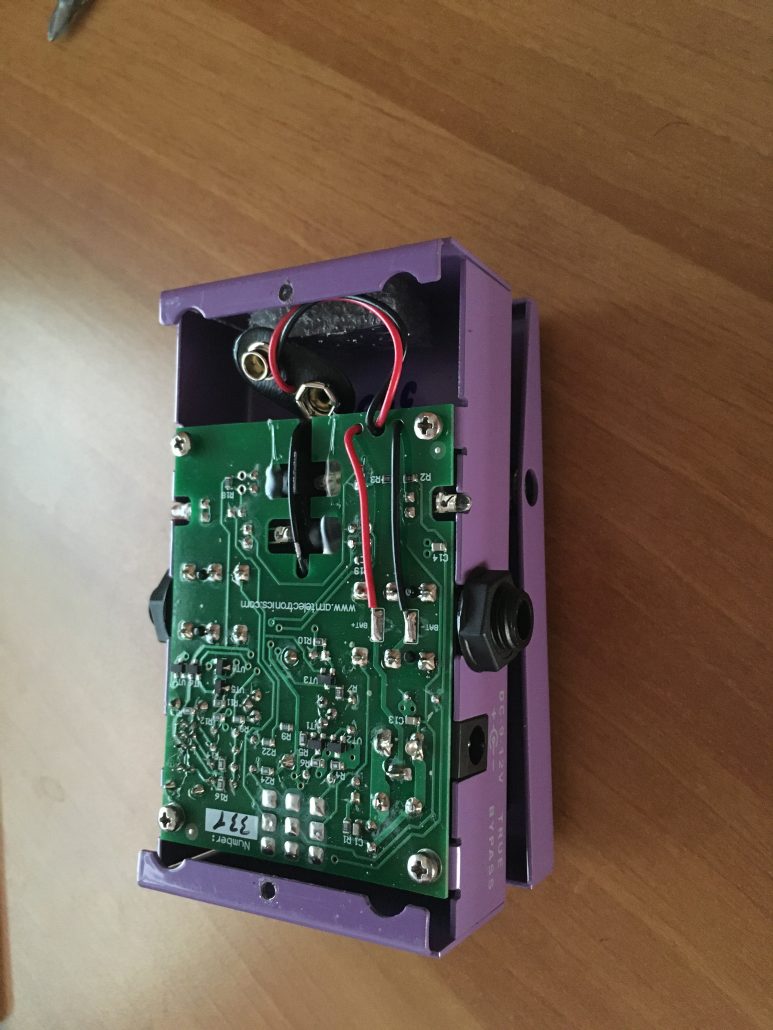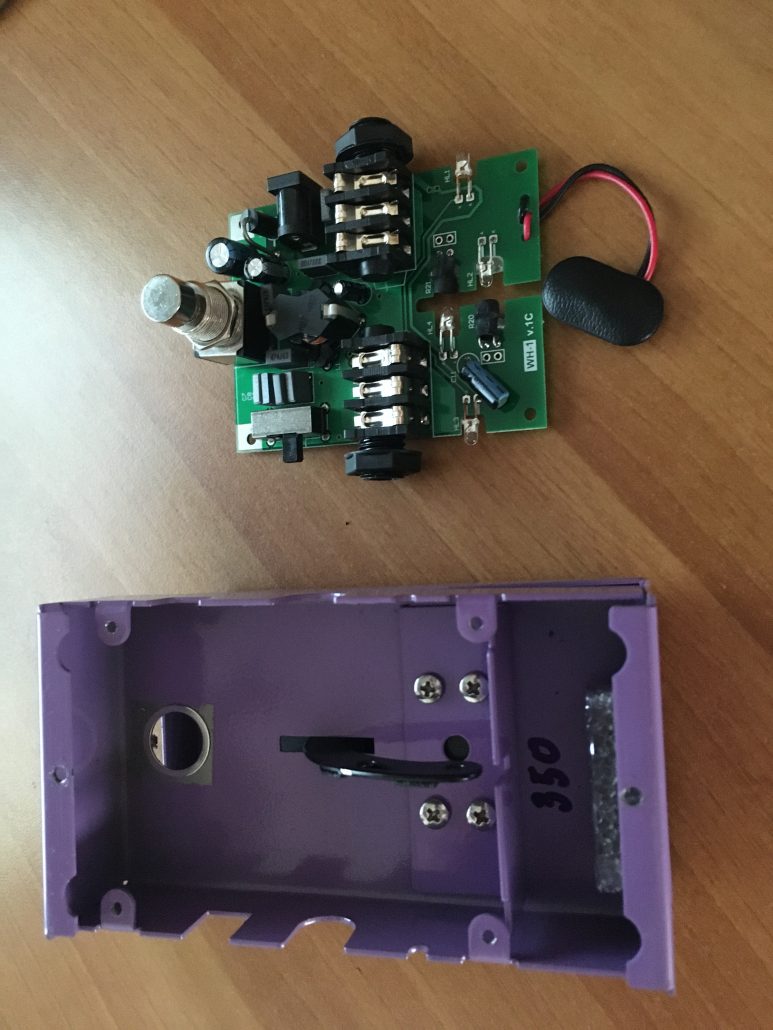Some time ago I published an article about this fantastic mini wah, calling it the best zero maintenance mini wah that can be put on the pedal board: the AMT WH-1 –> link.
The impressions were so good that when I found a second one at a good price on mercatino musicale, I immediately bought it as a backup!
Mindful of how well the first AMT WH-1 sounded (for my musical needs and for my tastes), as soon as I got there I immediately attacked it to try it out. Result: a disappointment …
The sounds were the same, however in an A/B comparison against the first, this sounded too sudden: at the extremes of the pedal, minimum and maximum, the sound was the same, but the variation from fully closed to fully open was too much sudden.
Solution! I take everything apart!
So I decided to disassemble both wahs, to see what they were different from. These are true-bypass wahs, with an optical sensor (and not a potentiometer like in the classic cry baby).
I would say that it was good to open them to see how they were made and what differences there were between them!
Disassembling the two AMT WH-1, I was able to see how the first (A, the one that worked correctly, in a progressive way) had a slit where the light was passed with a logarithmic / exponential form. Instead the second (B, the sudden one) had a linear slit. In the photos below you can clearly see the logarithmic trend of the first wah (A).
The volume of the sound has, for our ear, a logarithmic trend (the decibels, dB, unit of measurement of the volume, that is, have a logarithmic trend. This means that the doubling of the volume does not correspond to the doubling of dB, but an increase of 3dB ). The wah is a filter on the frequencies, that is a simple band pass filter, whose central band is decided by the position of the pedal (all closed pass the low and all open the high). Without bothering the acoustic physics too much, I would say that obviously the trend of this filter in the optically activated wah is also logarithmic …
Then, after understanding the mystery, I decided to mask the opening of the second (B) with adhesive tape, in order to give it a logarithmic shape. And as if by magic (after a few tests …) here is the progressiveness that was lost !!!
Noting the differences between the two, I was able to see that the first (A) also originally had a slit for the linear light. However, a plastic mask was inserted at the factory, identical to the one I personally built on the second (B), in order to transform the slot with a logarithmic shape.
Conclusions
I assume, therefore, that in the factory, during the assembly phase of the AMT WH-1, they forgot to insert that small piece of plastic … (which, however, makes a lot of difference …) …
Having said that, with a little inventiveness and manpower, here is a new wah as it is from the factory! 😀
Published on musicanza.it on: 16/10/2021.







2 Comments
Add yours
Jeremy
Hello, I believe I have the same exact issue on my WH-1. When you took the PCB out, did you have to remove the upper portion of the pedal or did you only have to unscrew the power switch washer?
Redazione
No, fortunately I just had to unscrew the power switch washer in order to be able to remove the PCB.
However, finding the right amount of “light occlusion” is really heuristic…